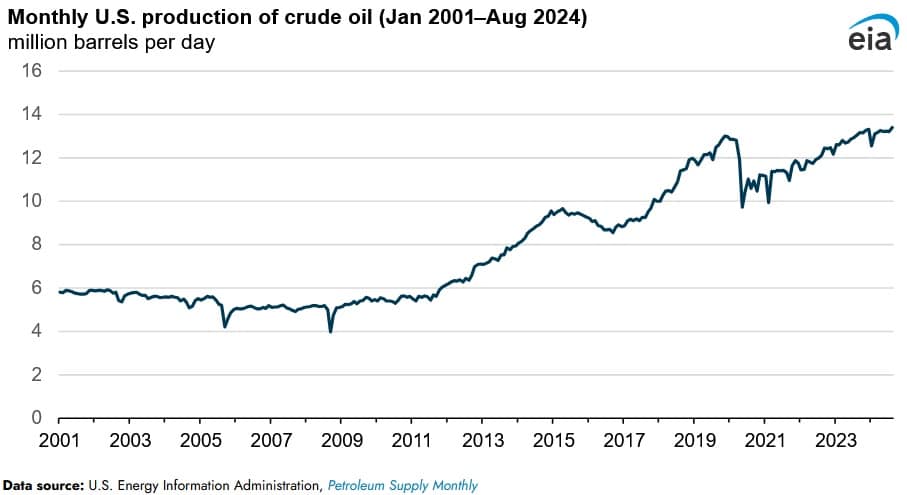U.S. Coal Production in 2023 Falls to Less Than Half of 2008 Peak: EIA

U.S. coal production was recorded at 578 million short tons (MMst) during 2023, less than half of the volume produced during 2008, when U.S. coal production was at its peak, according to an April 8 report published by the U.S. Energy Information Administration.
The decline in U.S. coal production can be attributed to increasingly stringent environmental regulations, higher mining costs and competition from other sources of electric power production. Moreover, the decline has been spread evenly across each coal type. The rank of coal depends on the depth at which coal deposits are buried. When ranked by their carbon content, the highest-ranking coal is anthracite, followed by bituminous, subbituminous, and lignite coal.
Older coal fired power facilities are the focus of phase outs, since the older units are inefficient and face high operating and maintenance costs. Moreover, the increasing costs makes these facilities less competitive, compared to other sources of electricity generation, such as gas, solar or wind. An additional factor incentivising early retirement of coal power stations is regulation. Coal power stations must adhere to laws that limit the discharge of wastewater by 2028, implementing changes so that coal plants comply with these regulations requires additional capital expenditure.
Electric generators plan to retire 8.1 GW of coal fired capacity during 2025, or 4.7 percent of the total U.S. coal fleet that was operating at the end of 2024. The largest U.S. coal asset that operators aim to phase out during 2025 is the 1,800-megawatt (MW) Intermountain Power Project in Utah. Michigan and Brandon Shores (1,273 MW) in Maryland are also expected to be phased out during 2025.
The agency forecasts U.S. coal production to be 512 MMst during 2024 and production is expected to further decline to 483 MMst during 2025 and 467 MMst during 2026, because of coal’s continued competition with renewables and natural gas in the electric power sector.
EnerKnol Pulses like this one are powered by the EnerKnol Platform—the first comprehensive database for real-time energy policy tracking. Sign up for a free trial below for access to key regulatory data and deep industry insights across the energy spectrum.
ACCESS FREE TRIAL